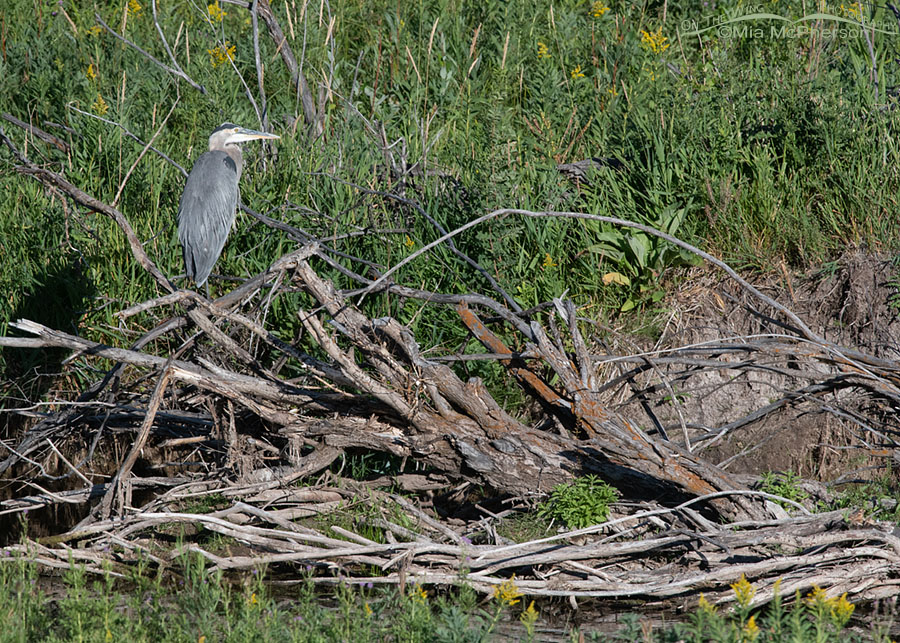 Great Blue Heron resting on a snag near a creek in the Wasatch Mountains – Nikon D500, f7.1, 1/2000, ISO 500, -0.7 EV, Nikkor 500mm VR with 1.4x TC, natural light
Great Blue Heron resting on a snag near a creek in the Wasatch Mountains – Nikon D500, f7.1, 1/2000, ISO 500, -0.7 EV, Nikkor 500mm VR with 1.4x TC, natural light
Some people might think of mid August as the lazy days of summer but that isn’t the case for all of the birds I photograph in the Wasatch Mountains because some of them are now busy fattening up for their fall migrations while the year round residents seem to be enjoying summer’s bounty.
Great Blue Herons are year round residents in Utah but I suspect that the Great Blues that live in these higher elevations have altitudinal migrations during the spring and fall which means during the spring they migrate to the higher elevations and during the fall they move down to lower areas.
I photographed this Great Blue Heron resting on a snag near a creek. The heron was the first bird I photographed yesterday morning and after that things got busy for me.
 Warbling Vireo perched next to a serviceberry – Nikon D500, f7.1, 1/800, ISO 500, Nikkor 500mm VR with 1.4x TC, natural light
Warbling Vireo perched next to a serviceberry – Nikon D500, f7.1, 1/800, ISO 500, Nikkor 500mm VR with 1.4x TC, natural light
I’m seeing and hearing more and more Warbling Vireos now and they are showing up lower in the trees where it is easier for me to take images of them. I saw a group of five vireos darting in and out of a serviceberry bush yesterday and one of them stopped flitting about long enough for me to take a nice series of photos of it next to the bush. They will be migrating soon and need to fuel up for their journey.
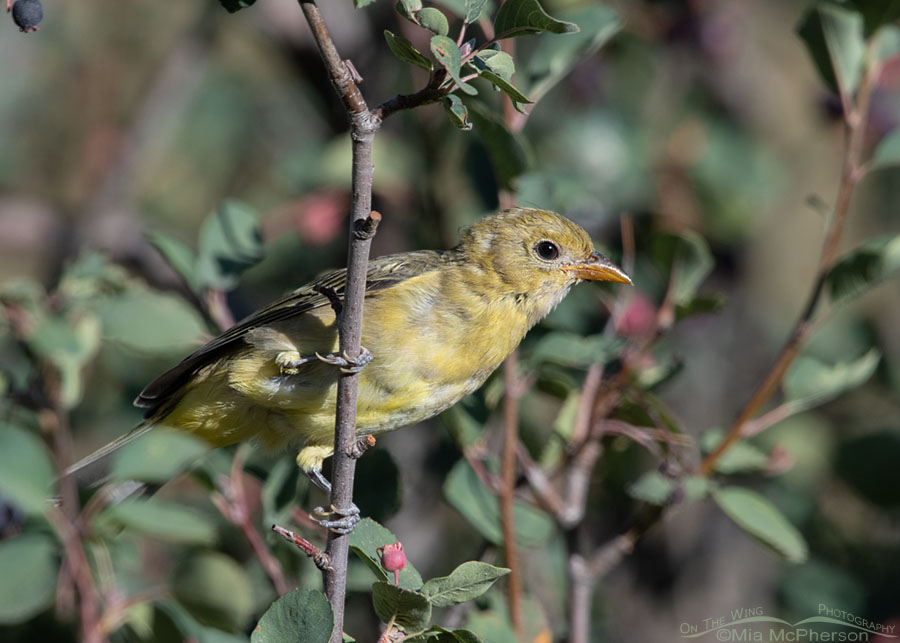 Immature Western Tanager in a serviceberry – Nikon D500, f7.1, 1/1000, ISO 500, Nikkor 500mm VR with 1.4x TC, natural light
Immature Western Tanager in a serviceberry – Nikon D500, f7.1, 1/1000, ISO 500, Nikkor 500mm VR with 1.4x TC, natural light
Western Tanagers are another species that will be leaving Utah before long and I was thrilled to see and photograph several of them yesterday morning including a few that were immature. The tanagers I photographed were feeding on the ripening serviceberries. When this young tanager took a break from eating the berries I was ready when it partially came out into the open.
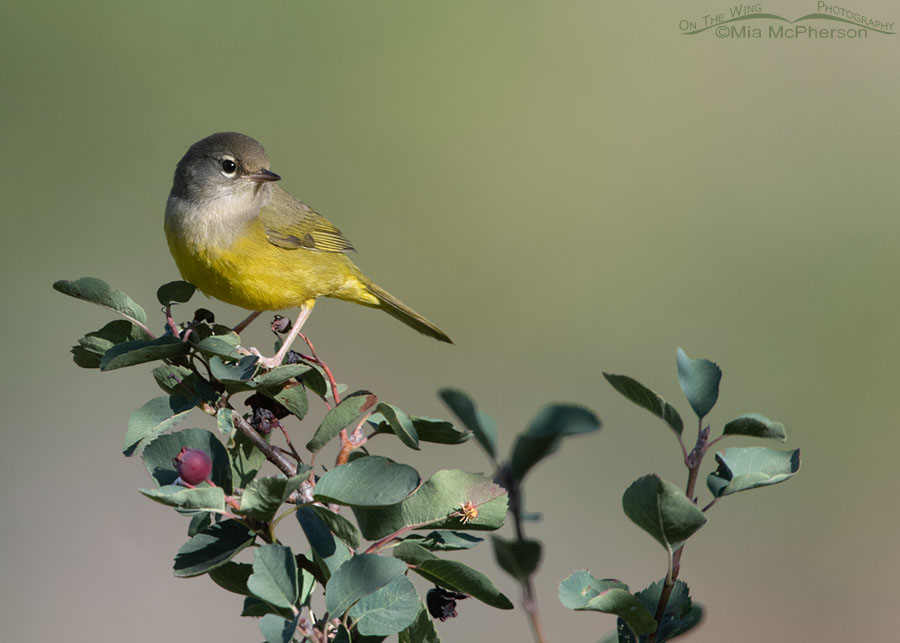 Immature MacGillivray’s Warbler on a serviceberry branch – Nikon D500, f7.1, 1/800, ISO 500, Nikkor 500mm VR with 1.4x TC, natural light
Immature MacGillivray’s Warbler on a serviceberry branch – Nikon D500, f7.1, 1/800, ISO 500, Nikkor 500mm VR with 1.4x TC, natural light
When I photographed this immature MacGillivray’s Warbler yesterday there were several more in the immediate area and when this one popped up into the top of a serviceberry branch I had to suppress my glee otherwise I might have whooped with joy and flushed it. This species will also take wing shortly to spend the winter months in warmer climes.
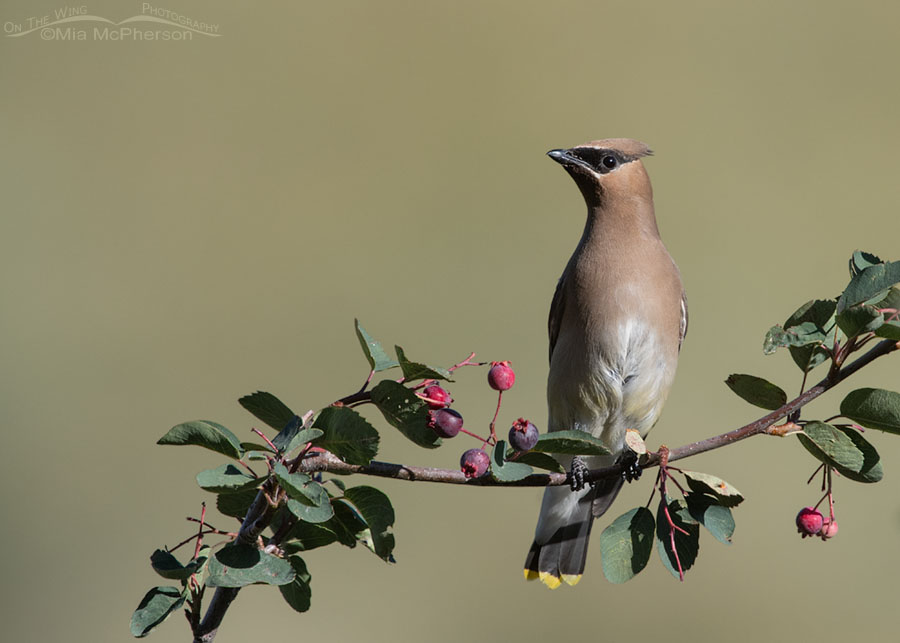 Cedar Waxwing adult in a serviceberry – Nikon D500, f7.1, 1/1250, ISO 500, Nikkor 500mm VR with 1.4x TC, natural light
Cedar Waxwing adult in a serviceberry – Nikon D500, f7.1, 1/1250, ISO 500, Nikkor 500mm VR with 1.4x TC, natural light
I also saw quite a few Cedar Waxwings yesterday and while most of them were chasing insects in what looks like an aerial ballet a few of them landed long enough for me to take photos of them on the serviceberry bushes. I’m always happy to get photos of the waxwings where they are out in the open like this one was.
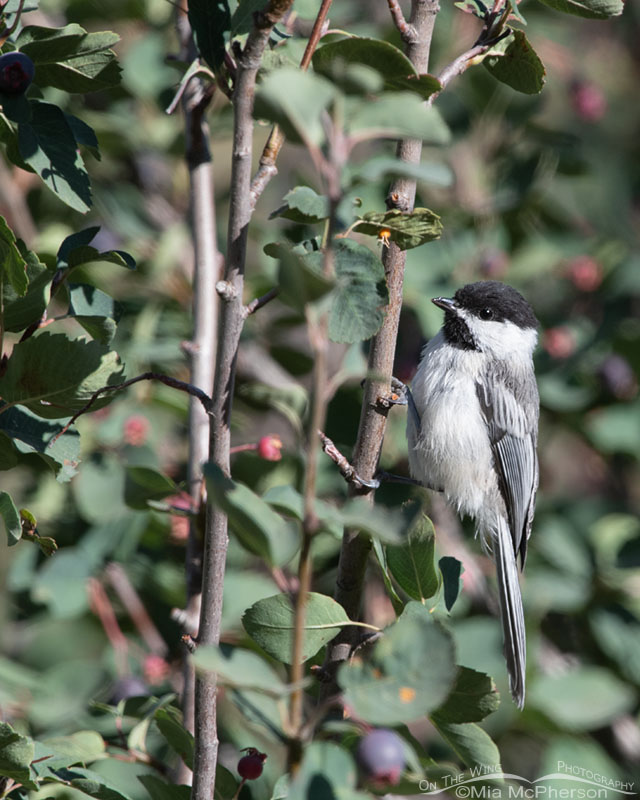 Adult Black-capped Chickadee in a serviceberry – Nikon D500, f7.1, 1/800, ISO 500, Nikkor 500mm VR with 1.4x TC, natural light
Adult Black-capped Chickadee in a serviceberry – Nikon D500, f7.1, 1/800, ISO 500, Nikkor 500mm VR with 1.4x TC, natural light
Another year round resident popped out into the open while clinging to the serviceberry bush and I was more than happy to take photographs of it. I think Black-capped Chickadees are tiny, delightful birds and even though I see them year round I have never taken them for granted. I could sit, watch and photograph them for hours.
As a bird photographer I’m feeling a sense of urgency now that I didn’t feel a few weeks ago because as I watch the migrants in the Wasatch Mountains getting ready for their long journeys I know that my time for photographing them this year is quickly running out.
Life is good.
Mia
Click here to see more of my bird photos in their galleries.


Catching up on post now that school has started up for me. Lovely collection!
Very glad you got to see all these lovelies yesterday and oh so grateful that you share the bounty with us!
Thank you for sharing yet more feathered enchantment (and for turning comments back on).